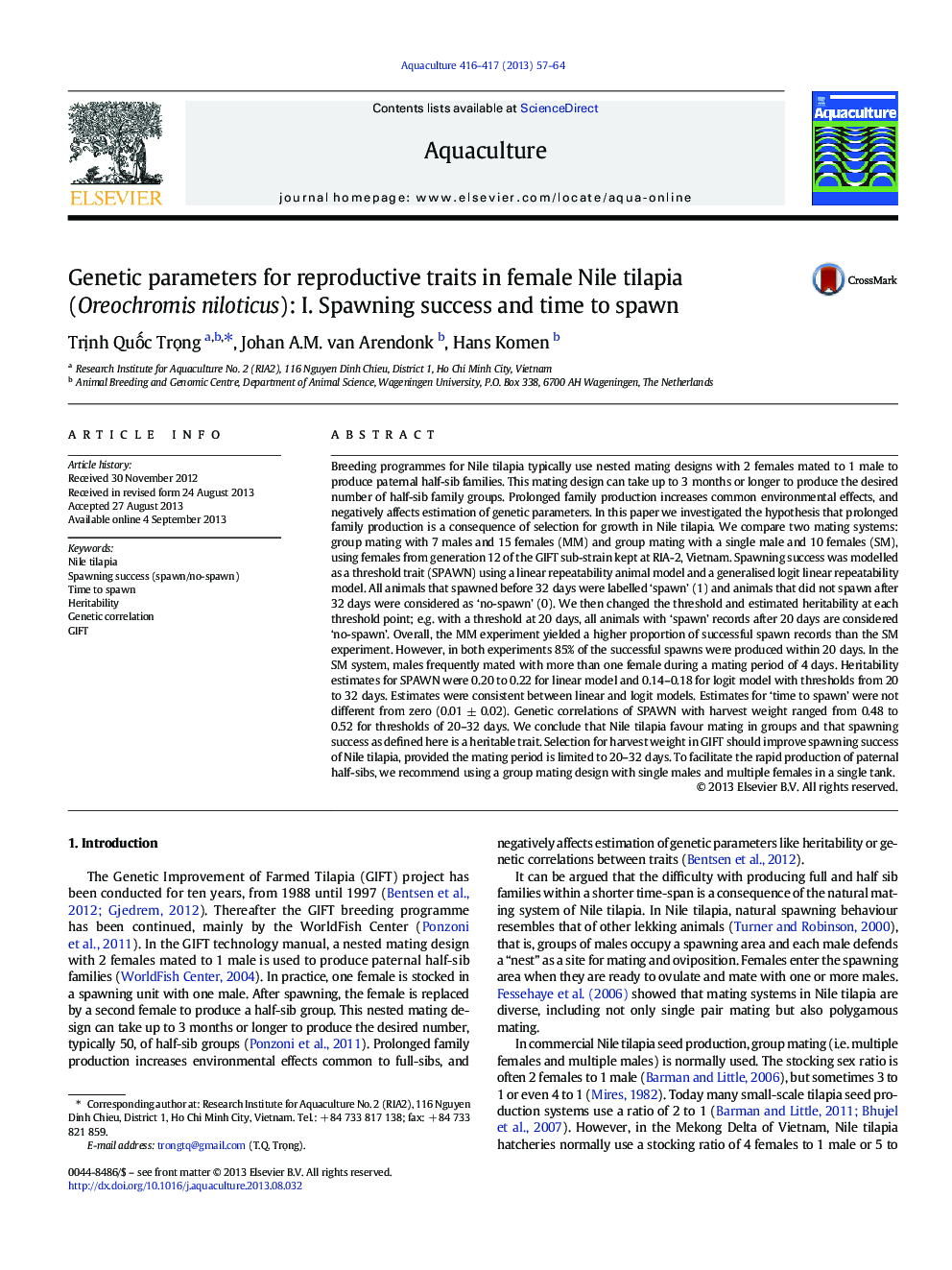| کد مقاله | کد نشریه | سال انتشار | مقاله انگلیسی | نسخه تمام متن |
|---|---|---|---|---|
| 2422024 | 1552865 | 2013 | 8 صفحه PDF | دانلود رایگان |

• First estimate of genetic parameters for spawning success in Nile tilapia
• Spawning success, defined as threshold trait, is heritable
• Spawning success has a favourable genetic correlation with harvest weight
• Guidelines for improved family production methods in Nile tilapia
Breeding programmes for Nile tilapia typically use nested mating designs with 2 females mated to 1 male to produce paternal half-sib families. This mating design can take up to 3 months or longer to produce the desired number of half-sib family groups. Prolonged family production increases common environmental effects, and negatively affects estimation of genetic parameters. In this paper we investigated the hypothesis that prolonged family production is a consequence of selection for growth in Nile tilapia. We compare two mating systems: group mating with 7 males and 15 females (MM) and group mating with a single male and 10 females (SM), using females from generation 12 of the GIFT sub-strain kept at RIA-2, Vietnam. Spawning success was modelled as a threshold trait (SPAWN) using a linear repeatability animal model and a generalised logit linear repeatability model. All animals that spawned before 32 days were labelled ‘spawn’ (1) and animals that did not spawn after 32 days were considered as ‘no-spawn’ (0). We then changed the threshold and estimated heritability at each threshold point; e.g. with a threshold at 20 days, all animals with ‘spawn’ records after 20 days are considered ‘no-spawn’. Overall, the MM experiment yielded a higher proportion of successful spawn records than the SM experiment. However, in both experiments 85% of the successful spawns were produced within 20 days. In the SM system, males frequently mated with more than one female during a mating period of 4 days. Heritability estimates for SPAWN were 0.20 to 0.22 for linear model and 0.14–0.18 for logit model with thresholds from 20 to 32 days. Estimates were consistent between linear and logit models. Estimates for ‘time to spawn’ were not different from zero (0.01 ± 0.02). Genetic correlations of SPAWN with harvest weight ranged from 0.48 to 0.52 for thresholds of 20–32 days. We conclude that Nile tilapia favour mating in groups and that spawning success as defined here is a heritable trait. Selection for harvest weight in GIFT should improve spawning success of Nile tilapia, provided the mating period is limited to 20–32 days. To facilitate the rapid production of paternal half-sibs, we recommend using a group mating design with single males and multiple females in a single tank.
Journal: Aquaculture - Volumes 416–417, 5 December 2013, Pages 57–64